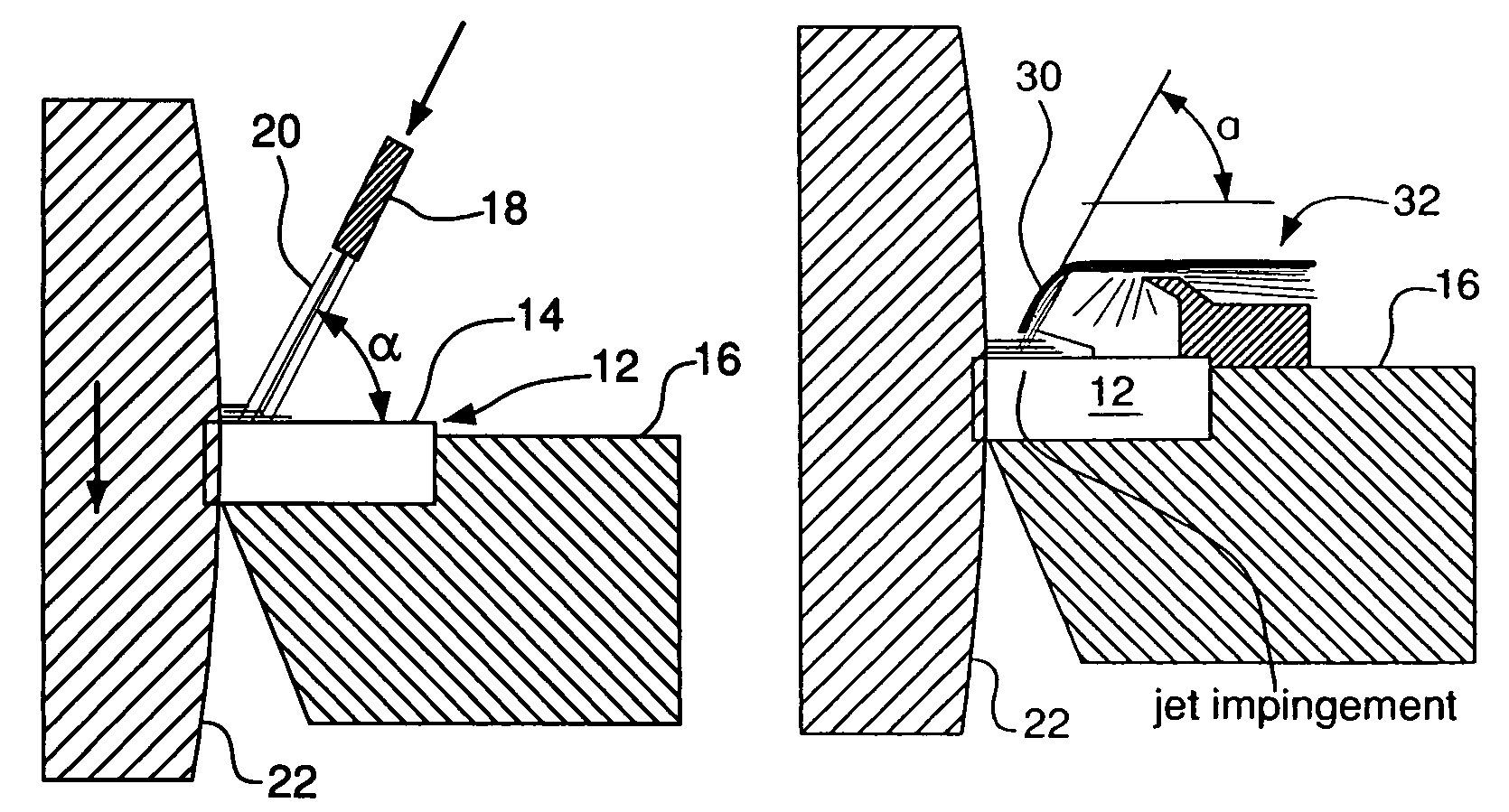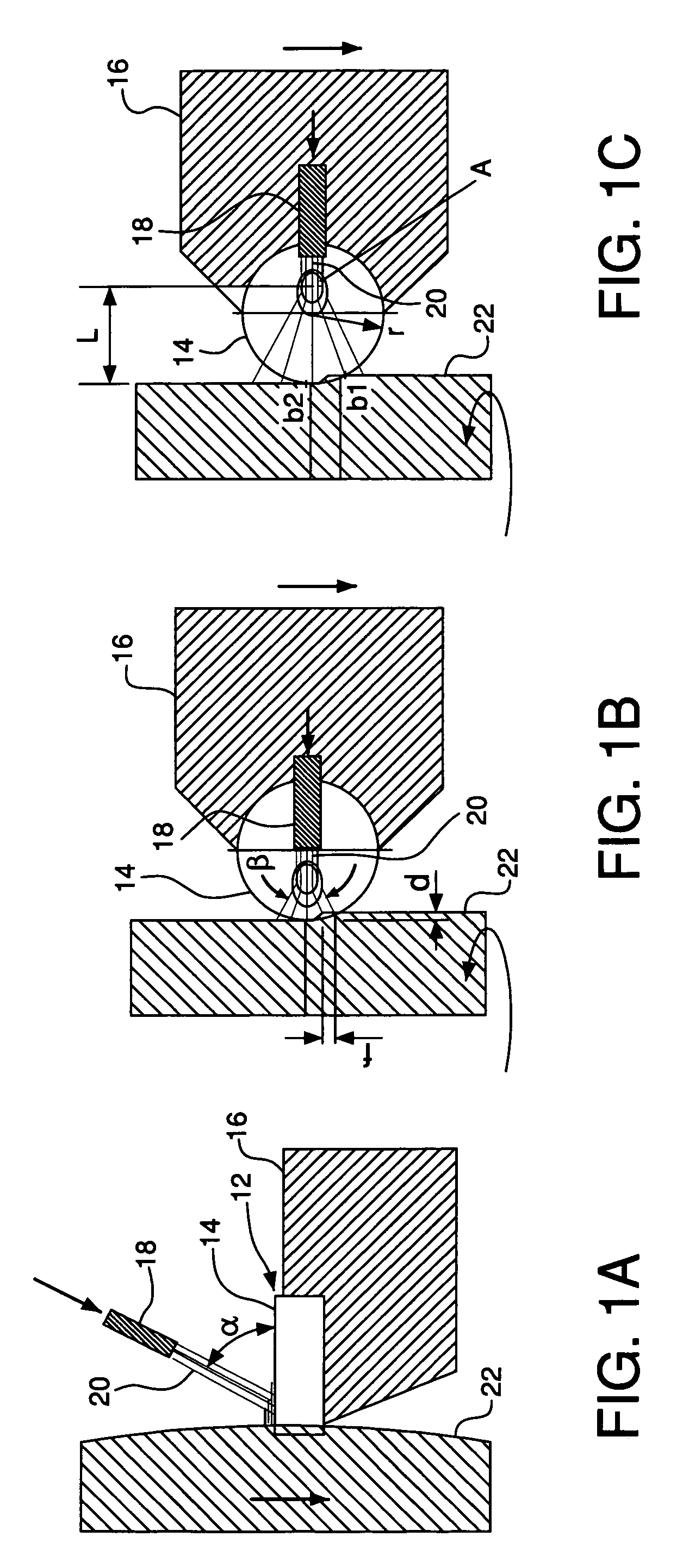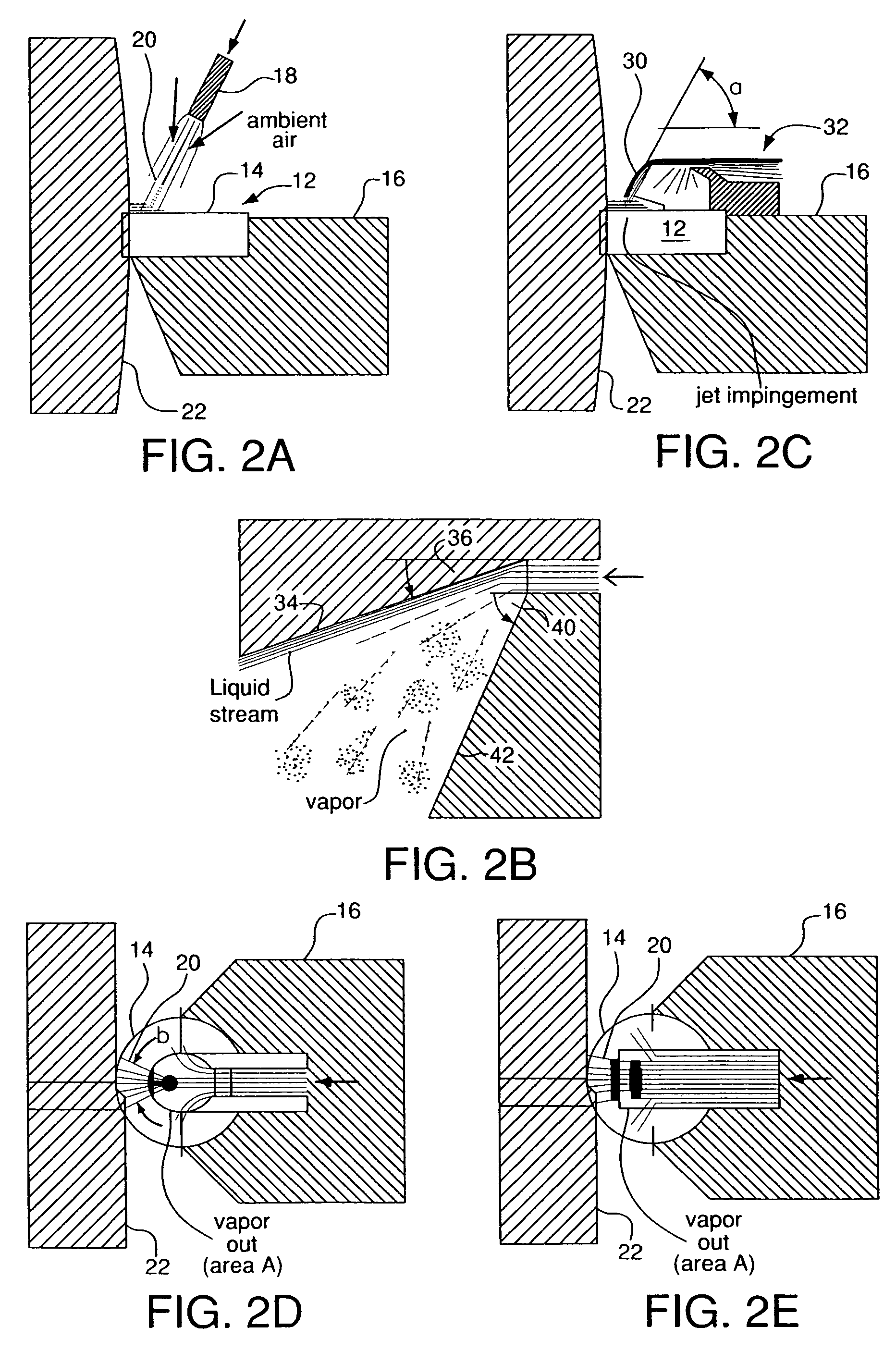Apparatus and method for improving work surface during forming and shaping of materials
a technology of material forming and material surface, applied in the direction of turning machines, vehicle heating/cooling devices, turning machines, etc., can solve the problems of not solving the problems or satisfying the needs, and neither the prior art references nor the publications discussed herein solve the problems or the needs, and achieve the effect of improving the surface finish and/or surface integrity of the workpi
- Summary
- Abstract
- Description
- Claims
- Application Information
AI Technical Summary
Benefits of technology
Problems solved by technology
Method used
Image
Examples
example 1
[0113]The effect of the cryogenic jet impingement angle (α) on cooling of a cutting insert was evaluated for various flowrates and supply pressures. Liquid nitrogen (LIN) coolant was jetted using two simple, tubular nozzles such as that shown in FIG. 2A. The internal termination of the nozzles was shaped to form a converging-diverging (CD), Laval-type fluidic passage which can focus expanding cryogenic jets more precisely than straight-wall or converging-only fluid passages. The narrowest section of the throat of the first CD nozzle was 0.019 inches in diameter, and the second CD nozzle was 0.025 inches in diameter. At the supply pressure of 120 psig, the smaller nozzle jetted 1.1 lbs / minute of LIN, and the larger nozzle jetted 1.8 lbs / minute of LIN. An additional test with the larger nozzle at the reduced supply pressure of 60 psig showed that the expanding jet was more confined or less bushy, and its flowrate was 1.2 lbs / minute of LIN.
[0114]LIN jets produced by each nozzle were ai...
example 2
[0116]Iron, graphite, copper, and nickel powders were premixed to obtain the FN-0208 (MPIF class) composition (0.8-0.9% C, 0.8% Ni, 2.0% Cu, bal.Fe, all on weight basis), pressed into powder metallurgy (P / M) disks, and sintered to achieve two different density levels: 6.67 g / cm3 (6.67 Mg / m3), ‘low-density’ material, 14.5% porosity fraction, and 7.20 g / cm3 (7.20 Mg / m3), ‘high-density’ material, 7.7% porosity fraction. Half of the disks from each density group were subsequently case hardened by heat-treating using the conventional procedures for achieving a high-level apparent hardness—at least 30 HRC in the case of the low density material, and at least 40 HRC in the case of the high density material.
[0117]Surface machining of so prepared P / M disks was carried out on a 20 kW CNC lathe, constant speed operation, using the following parameters: (1) cutting speed—1,000 ft / min. (305 m / min. or 5.08 m / s); (2) feedrate—0.007 inch / rev. (0.178 mm / rev.); and (3) depth of cut—0.008 inches (0.20...
example 3
[0120]The as-sintered, soft P / M disks from Example 2 were surface machined using liquid nitrogen (LIN) cryogenic jet cooling and a tool-clamping nozzle with an internal expansion chamber as shown in FIGS. 2C and 2D. At the LIN mass-flowrate of 1.8 lbs / minute, and the supply pressure of 100 psig (6.89 bar), the nozzle produced a jet impringing at the rake surface under the impingement angle (α) equal 45° and spreading to the sides under the spread angle (β) equal 90°. A cost-effective, commercially available, Al2O3—TiC based, TiN-coated (PVD), fine-grained black ceramic cutting insert was used which had four (4) cutting edges and geometry specified as follows: CNGA-433, 0.008-inch land (0.200 mm wide chamfer), −25° chamfer angle. Apart from the different insert and cooling method, all other conditions were the same as in Example 2.
[0121]Table 2 compares the as-machined surface roughness of flood and LIN machined disks and the life of cutting edge before an average tool flank wear (Vb...
PUM
| Property | Measurement | Unit |
|---|---|---|
| spread angle | aaaaa | aaaaa |
| spread angle | aaaaa | aaaaa |
| impingement angle | aaaaa | aaaaa |
Abstract
Description
Claims
Application Information
 Login to View More
Login to View More - R&D
- Intellectual Property
- Life Sciences
- Materials
- Tech Scout
- Unparalleled Data Quality
- Higher Quality Content
- 60% Fewer Hallucinations
Browse by: Latest US Patents, China's latest patents, Technical Efficacy Thesaurus, Application Domain, Technology Topic, Popular Technical Reports.
© 2025 PatSnap. All rights reserved.Legal|Privacy policy|Modern Slavery Act Transparency Statement|Sitemap|About US| Contact US: help@patsnap.com



